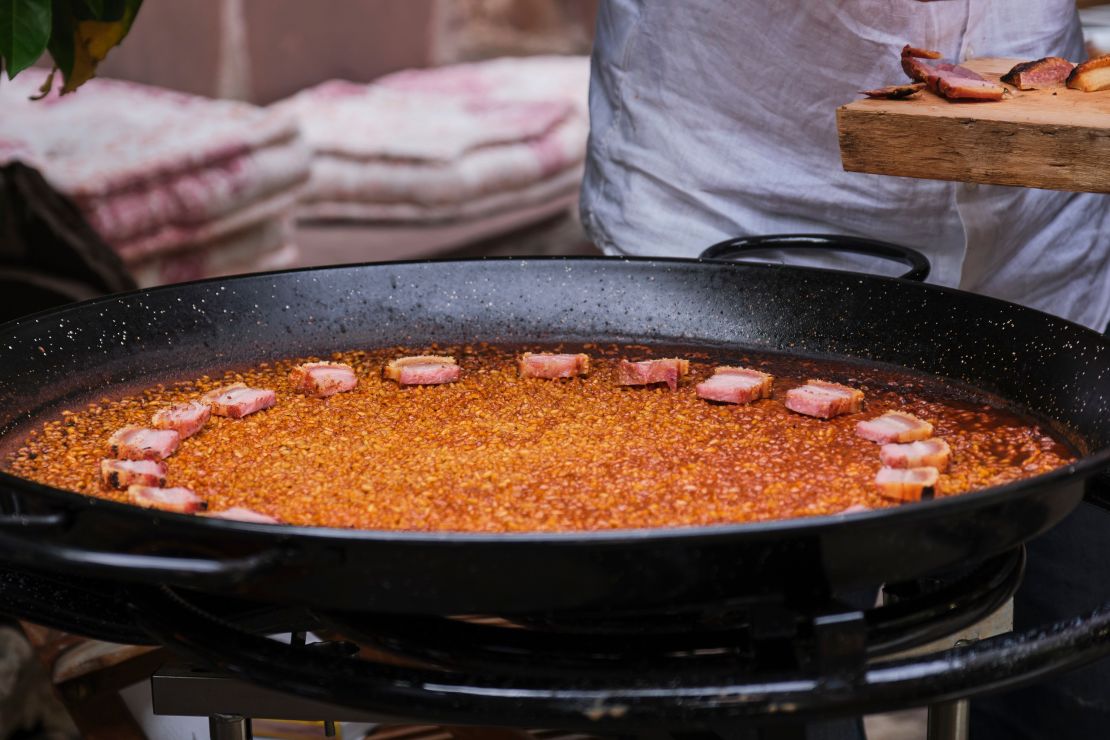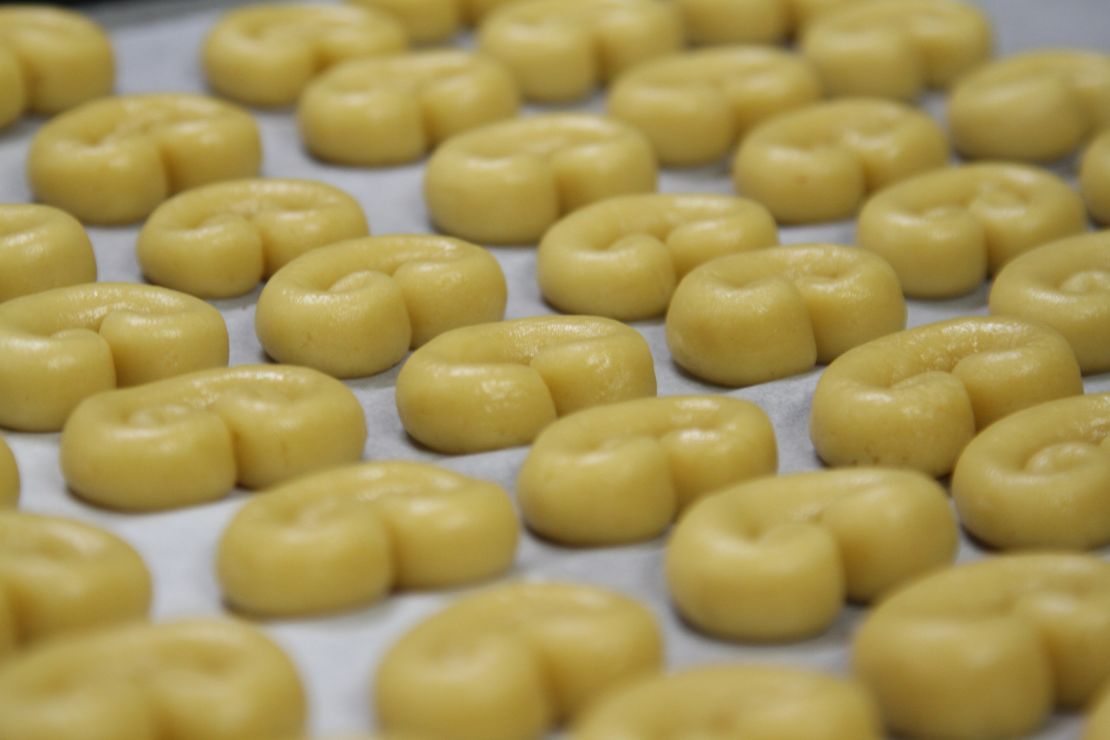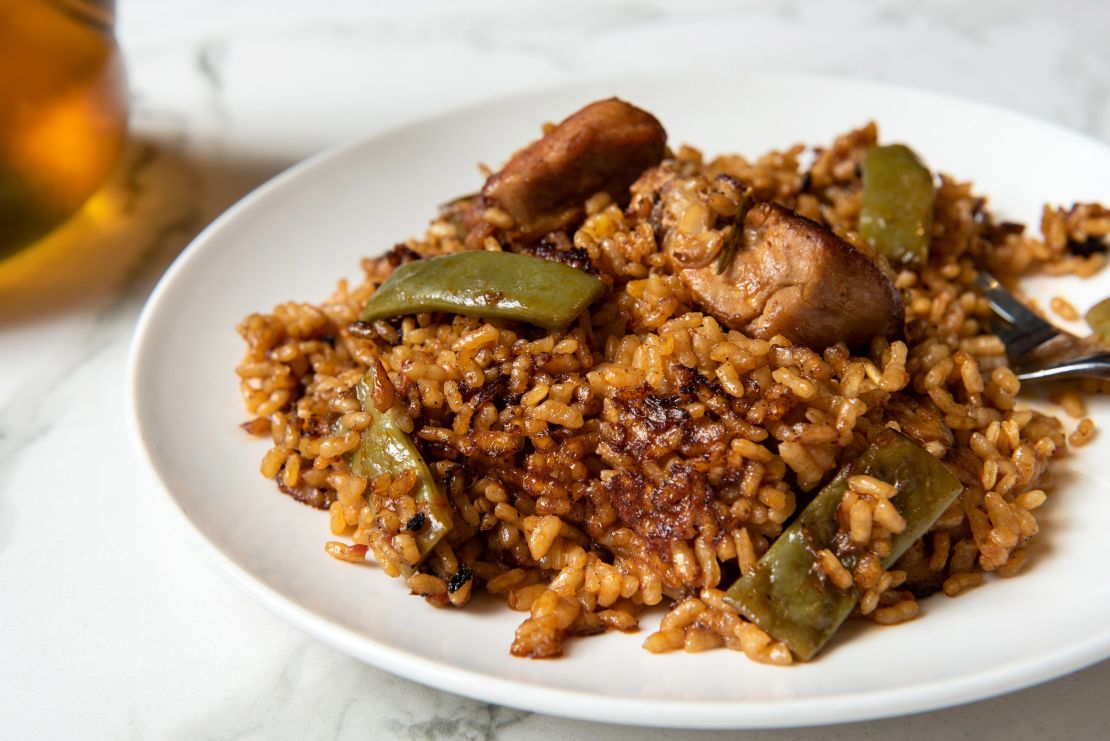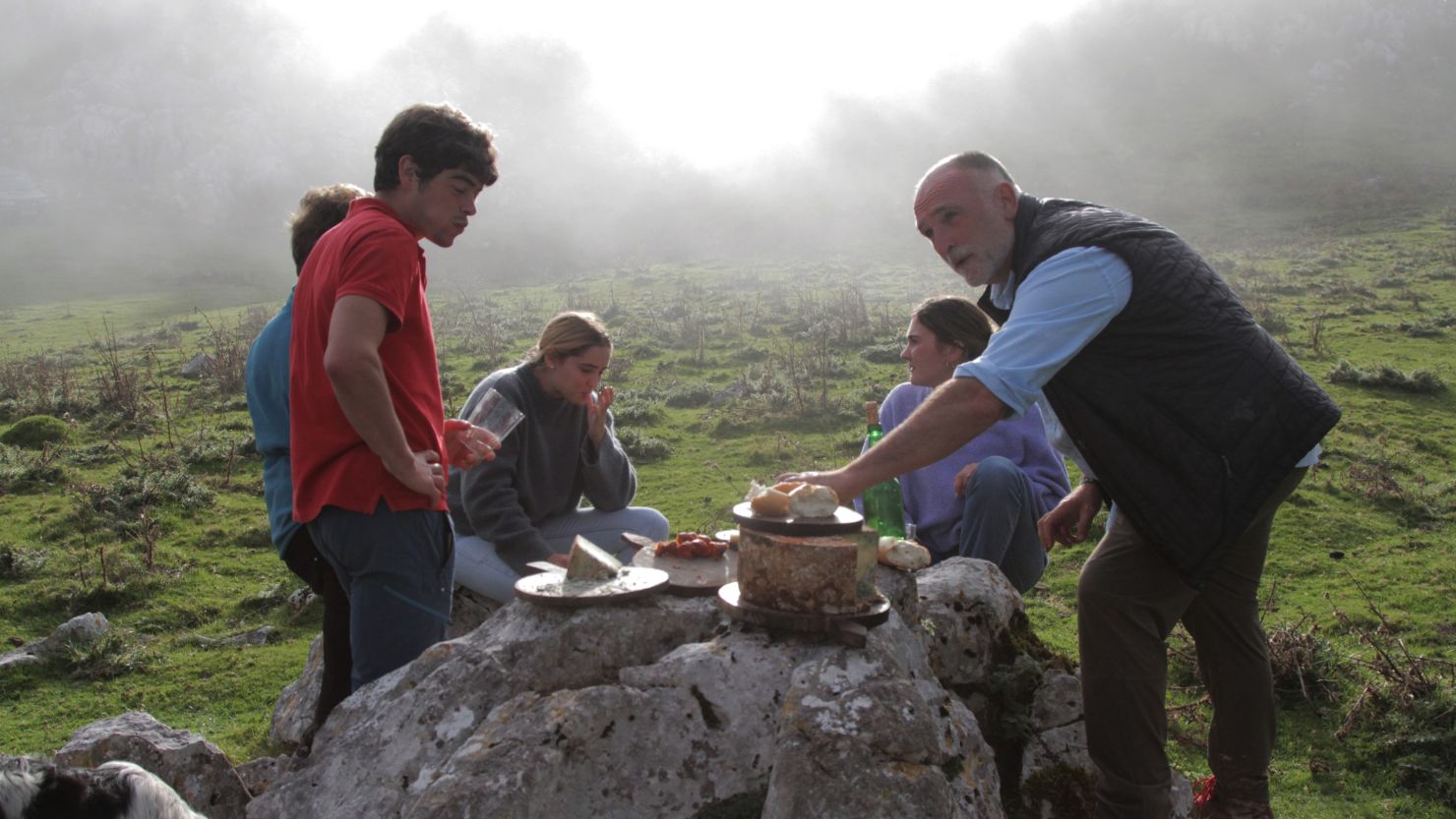Editor’s note: The Discovery+ six-part series “José Andrés and Family in Spain” airs on CNN at 9 p.m. ET/PT Sundays starting September 24.
Many Americans think they know what paella is.
The deep, rust-colored rice. The crispy edges. Mussels, or shrimp, carefully nestled in the pan. Peas throughout, and sometimes even chorizo.
But Chef José Andrés is here to make it known: That’s not really what true paella is.
At least, that’s what Andrés says in his docuseries “José Andrés and Family in Spain,” streaming on Discovery+ and now airing on CNN. (Discovery+ and CNN are both units of Warner Bros. Discovery.)
Across six mouthwatering episodes, Andrés — the Spanish chef and restaurateur behind acclaimed spots like Minibar and The Bazaar — introduces his daughters to a different region of Spain, highlighting each area’s food in an attempt to demonstrate the regionality of Spanish cuisine.
Just as Naples in Italy is known for its Neapolitan pizza, or Nice in France is known for ratatouille, food in Spain is regional, too. Each episode focuses on a different territory, and as his daughters eat and learn about Spanish food, the audience eats (with their eyes) and learns, too.
Of course, the show is about food. But it’s also an enticing case for visiting the parts of Spain that the Andrés family explores. That’s intentional. Andrés began conceptualizing the show during the early days of the Covid-19 pandemic, when many people couldn’t travel. Now, that’s changed.
“(The show) was just to tell people, ‘Lets go, wake up, we need to start traveling again,’” Andrés said in an interview with CNN’s Jim Acosta. “Everybody should travel the world, because it’s a way we become better, by understanding each other better and knowing about other people.”
In the series, Andrés explains that true paella, from Valencia, doesn’t have seafood or chorizo or peas. Instead, it has 10 main ingredients, which Andrés compares to the Ten Commandments: olive oil, rabbit, chicken, green beans, white beans, tomato, rice, salt, saffron and water.

“Everything else,” he says, “will be arroz.” Just rice.
Here are five other things Andrés teaches us about regional Spanish cuisine, followed by his recipe for authentic paella. Trust us, you’ll want to bring your appetite.
‘Tapas’ doesn’t actually mean small plates
Ah, tapas. Those small plates and delectable tidbits have become a staple part of restaurant culture beyond Spain and Spanish food (see: Asian tapas). Tapas doesn’t hold eaters to a single dish; instead, it allows people to try everything, Andrés explains in the show.
“(Tapas) is not food,” Andrés noted in his conversation with Acosta. “It’s a way of life. It’s a way to enjoy family and friends.”
But the word “tapas” doesn’t mean small dishes, nor is it related to food at all. “Tapas” is derived from the Spanish word tapar, meaning “to cover,” because people would put pieces of bread or small open-face sandwiches on top of their drinks to prevent bugs or dust from entering. The food was, quite literally, a cover.
These days you won’t see patrons putting their food on top of their drinks. But you might see Andrés at the bar, ordering one of every tapas — just as he does on the show.
Catalonia has its own surf and turf
Americans may know surf and turf most commonly as a steakhouse staple. But Catalonia, a region in northeast Spain and home to Barcelona, has its own version, called mar y monta?a, or “sea and mountain.”
A traditional dish invented by local fishermen and farmers, the combination is a common one, Andrés — who grew up in the region — explains. There, it’s sometimes made with chicken and Mediterranean lobster, combined in a dish anchored by onions, garlic, tomatoes and a dash of an unexpected spice.
Curious? See Andrés cook it on the show, and maybe give it a whirl yourself at home.
Artichokes, found in many Spanish dishes, aren’t actually from Spain
The Moors spent almost 500 years in Andalusia, a southern region of Spain, and their impact is evident in the architecture, the art and, of course, the food.
One notable thing they brought with them? Artichokes, Andrés says, called alcachofas in Spanish. Words that begin with the “al” sound typically have Arabic origin, as he tells his daughters.
Now obviously, war and invasion are never good, Andrés told CNN’s Acosta. But the cultural exchange was rich.
“All the Arab world, all the Muslim world was very important (in Andalusia),” he said. “To this day, all these traditions remain in many, many, many dishes and ingredients.”
Artichokes are just one example, and Andrés highlights alcachofas confitadas con jamón ibérico, a dish of artichokes with ham and egg yolk.
These famous lemon cookies have royal origins and highlight Madrid’s cuisine
When Andrés walks us through Madrid, the capital of Spain, one thing is clear: This city is not like the rest of the country.
Andrés tells us why. As the home of the Spanish royal family, Madrid’s cuisine reflects the class divide of the city. On one hand, there’s indulgent, rich dishes like roast baby lamb, which Andrés lovingly pores over at Posada de la Villa. But on the other hand, there are more humble dishes like tostas and patatas bravas — quick, cheap, and filling dishes that commoners historically ate.

This history is evident in the pastas del consejo, or “council cookies,” small lemon cookies that are still made every week for palace and state meetings. But their origins come from King Alfonso XIII, who became king at birth due to his father’s early death. Because he was so young, though, his mother needed a small treat to keep him occupied during the long meetings, Andrés says. Hence, the pastas del consejo were born — cookies fit for a king.
In Asturias, apple cider is more important than wine
Though Andrés moved to Catalonia at a young age, he was actually born in Asturias, a region in northwest Spain.
There, green farmland makes up most of the area, and that’s reflected in the cuisine. Asturias is home to thousands of small organic farms, Andrés says, and their crops are at the heart of Asturian cooking.
Just look at the apple cider. Though Spain may be known internationally for its wine, Asturias prefers hard apple cider — producing 10 million gallons of the stuff every year. It’s “like a religion here,” Andrés says on the show.
“We drink it like the French drink wine,” he explains. “Pretty much every day.”
The cider isn’t carbonated, so servers pour the drink from as high as their arms will allow, with the glass held below the hip. This method gives the drink a foam head, and also makes for a delightful display of skill.
Though the drink is relatively low alcohol — about 5% ABV — it will still, as the Andrés family can attest, get you buzzed.

Paella Valenciana
Recipe from Chef José Andrés
Authentic paella from Valencia is made with large, flat white lima beans called?garrafón,?but fresh favas or?butter beans?make fine substitutes. Look for garrafón beans and the short-grain rice called bomba at online specialty stores.
If desired, after adding the beans, season to taste with sweet Spanish paprika for a subtly warm, smoky flavor.
Makes 4-6 servings
Ingredients
- 2 tablespoons | about 30 milliliters extra-virgin olive oil, preferably Spanish
- 2 chicken skin-on, bone-in thighs, cut into 2-inch (5-centimeter) pieces
- 2 rabbit legs
- Kosher salt
- 1 cup | 150 grams Romano or flat green beans, cut into 1-inch (2 ?-centimeter) pieces
- ? cup | 134 grams garrafón beans, peeled fresh fava beans?or butter beans
- 1 14-ounce | 400 grams can crushed tomatoes
- 1 pinch saffron
- 4 cups | 946 milliliters low-sodium chicken stock or water
- 2 sprigs fresh rosemary
- 1 cup | 200 grams bomba rice or other short-grain rice
Equipment
- 13- or 15-inch paella pan
Instructions
1. Warm the olive oil in the paella pan over medium-high heat until it is hot but not smoking. Add the chicken and rabbit pieces. Sear the meats on all sides until well-browned, about 8 minutes, then season with salt. Move the meat pieces to the outer edges of the paella pan, creating a circle in the center.
2. Add the Romano and garrafón beans in the center of the pan and season with salt. Cook the beans until lightly browned, about 5 minutes, then push the beans to the outer edges of the paella pan with the meat pieces.
3. Pour the crushed tomatoes into the center of the pan and let them cook, stirring occasionally until they reduce by half and begin to turn a deep red color, about 5 minutes.
4. Stir the meat and legumes into the tomatoes and continue cooking to caramelize the sauce, about 3 minutes more.
5. Crumble the saffron into the pan and add the stock. Season with salt and add the rosemary. Increase the heat to high and bring the liquid to a boil, then let it boil for 2 to 3 minutes.
6. Remove the rosemary and add the rice, taking care to spread the grains evenly around the pan and mix with the meat and vegetables. Cook over high heat, stirring frequently with a wooden spoon, for 8 minutes. You should see the rice floating around the pan as the stock boils.
7. Reduce the heat to medium-low and do a final stir of the rice to make sure the meats and vegetables are evenly distributed across the pan. Cook for 10 minutes, and do not stir as the liquid reduces. You want the rice to be slightly al dente, with a nice firm center. After 8 minutes, there should be little liquid left in the pan. Increase the heat to high for the remaining 2 minutes to get the crunchy?soccarat, the caramelized crust at the bottom of the pan. When the rice is done, remove the pan from the heat and let it sit for 5 minutes before serving.
This recipe is courtesy of Chef José Andrés.
